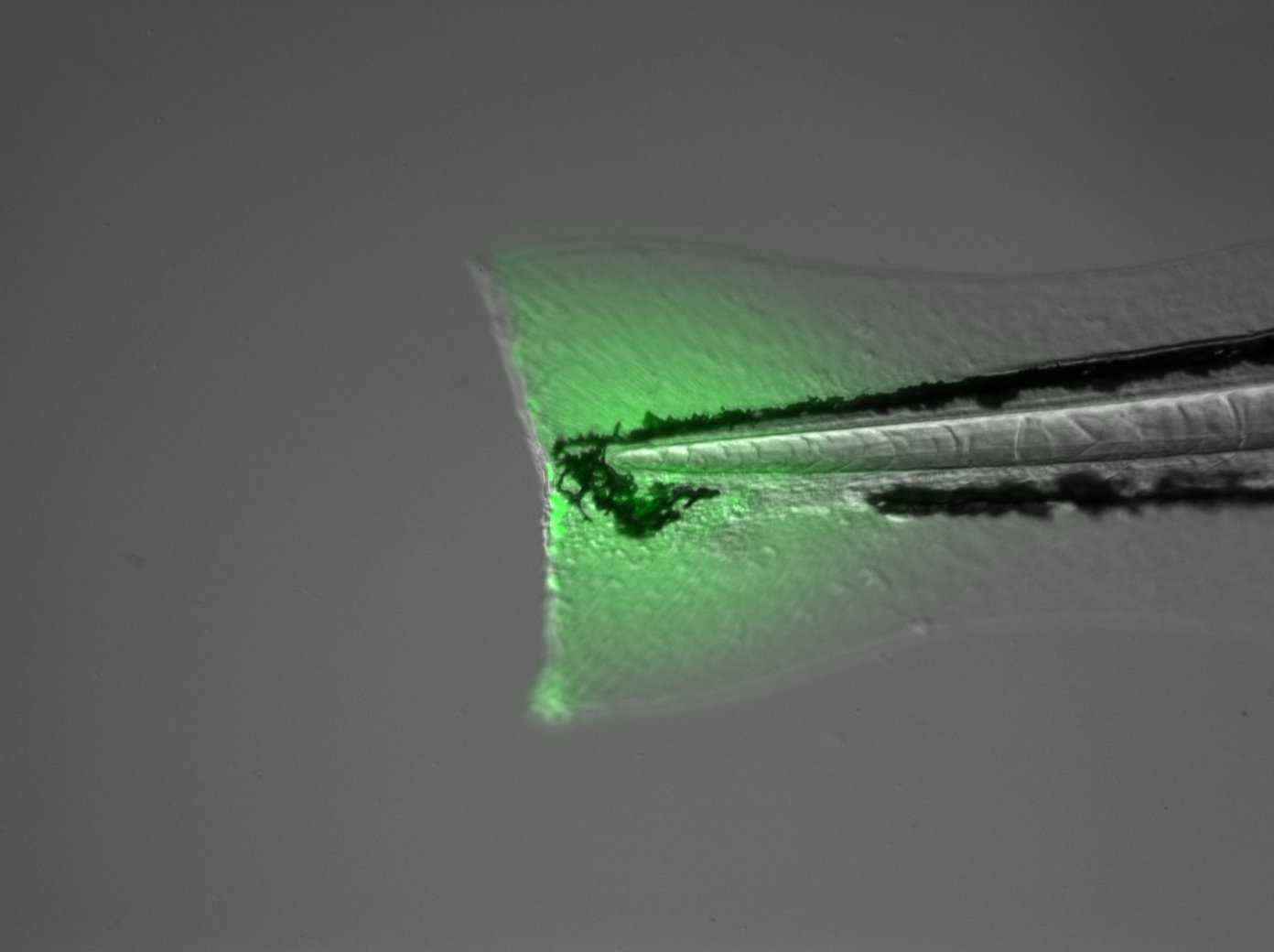Highlights
Researchers Develop High-cell-density Cultivation Technology for Water-Soluble β-1,3-Glucans Production with Flagellate Alga Poterioochromonas malhamensis

Superimposed image of the injured zebrafish fins under a microscopy at the GFP channel and bright field channel (Credit: IHB)
Microalgae are considered as a potential source for producing β-1,3-glucans, and many microalgae can produce various β-1,3-glucans with different structures and solubilities. However, due to the lack of effective technology that can enable high-cell-density cultivation of microalgae, most microalgae with high β-1,3-glucan contents have not been commercially developed. Moreover, bioactivities of the microalgal β-1,3-glucan have been rarely studied.
A research group led by Prof. HAN Danxiang from the Institute of Hydrobiology (IHB) of the Chinese Academy of Sciences established the heterotrophically high-cell-density cultivation process of a naked unicellular biflagellate alga (Poterioochromonas malhamensis) for producing β-1,3-glucan. The study was published in Bioresource Technology.
In this study, researchers first combined the utilization of ammonium chloride as the nitrogen source, added vitamins B1 and B12 simultaneously, and maintained pH at 6.0. By doing these, they achieved the highest biomass and β-1,3-glucan yield of 32.8 g L-1 and 13.9 g L-1, respectively.
Researchers then obtained high purity P. malhamensis β-1,3-glucan sample (>95%) by applying a multi-step purification process including hot water extraction, ethanol precipitation, enzymatic treatment, dialysis, among others.
They further analyzed the monosaccharide composition, molecular weight, and structure characteristic of P. malhamensis β-1,3-glucan. Ion chromatogram analysis indicated that glucose was the major monosaccharide. The average molecular weight of P. malhamensis polysaccharides was determined as 16.7 kDa by gel permeation chromatography analysis.
Through sugar profiling and nuclear magnetic resonance analysis, researchers found that the P. malhamensis β-1,3-glucan was composed of glucose with the β-(1→3) main chain and the β-(1→6) side chain.
Finally, Han’s team evaluated the bioactivities of the P. malhamensis β-glucan by using a model of zebrafish caudal fin regeneration. The P. malhamensis β-1,3-glucan (P-G) was proved to be effective in promoting the fin regeneration and improving the in vivo antioxidative activity of zebrafish.
Moreover, compared to commercial yeast β-1,3-glucan (CY-G), the P. malhamensis β-1,3-glucan was found to have higher maximum regeneration promoting rate.
This study underpins the feasibility of culturing P. malhamensis under heterotrophic conditions for producing the highly water-soluble bioactive β-1,3-glucans for food and pharmaceutical applications.